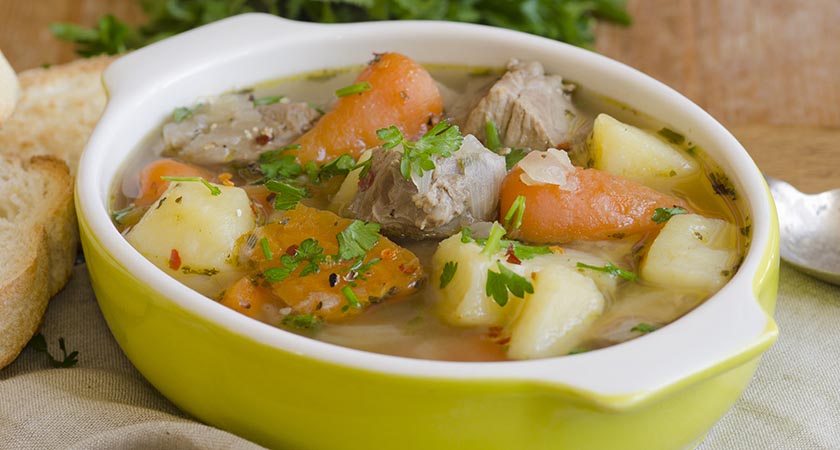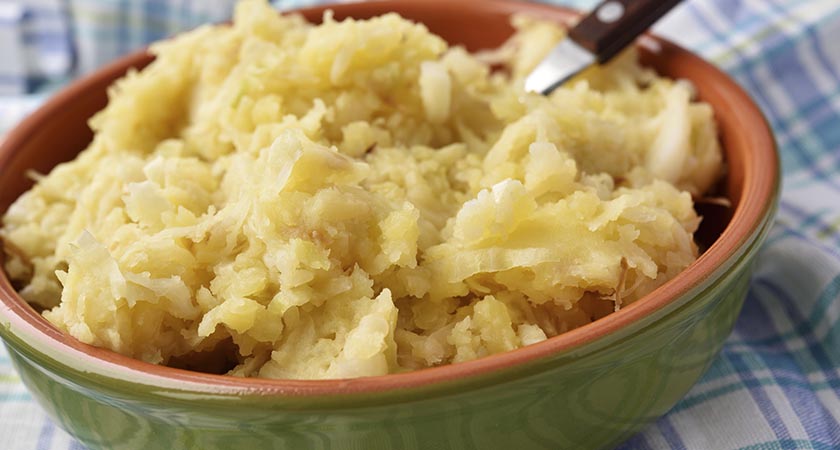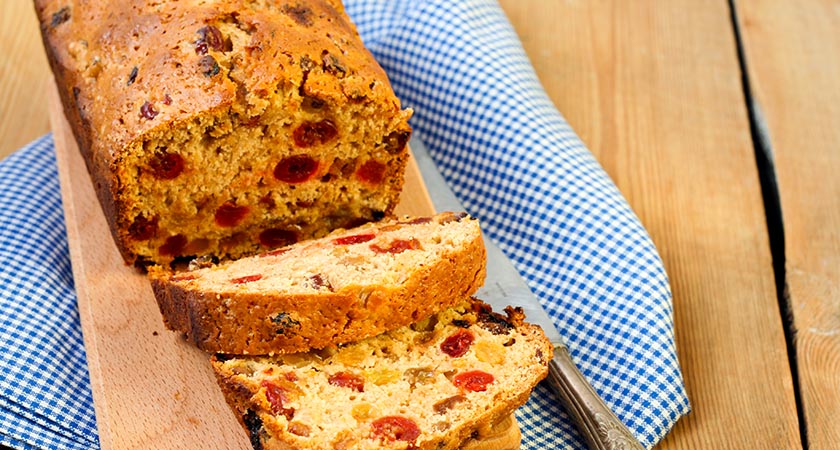GUINNESS and whiskey have been among Ireland’s great gifts to the epicurean world.
But the cuisine, the food, of the Gaels has largely remained at home within its own shores.
We look at 11 of Ireland's most traditional dishes.

1. Irish stew
You’d be hard put to find Irish stew on the menu of any restaurant these days. In days gone by it was a standby for many families and a staple diet in hospitals, schools etc. Simple to make and cheap to source, it was the food of the common people.
Irish stew was traditionally made with mutton, slowly stewed for hours until the meat was tender, with onions, potatoes and sometimes carrots.
To avoid the stew being watery, a common complaint, porridge oats, barley or sliced potatoes would be added.
 Colcannon is the food of champions. Picture: iStock
Colcannon is the food of champions. Picture: iStock2. Colcannon and champ
Normally called champ in Northern Ireland and colcannon elsewhere, this dish transforms the humble potato into a delicacy.
Champ consists of mashed potato, cream, butter, scallions (spring onions), cabbage or kale.
Today foreign interlopers such as green peppers and garlic are sometimes added.
3. Boiled bacon and cabbage
Boiled bacon, boiled cabbage and boiled potatoes.
This is a combination that doesn't immediately make you think — 'Ah, must be a dish from a tasting menu at that new seven Michelin star restaurant in Hoxton'.
Nonetheless this traditional dish remains a favourite throughout Ireland. Traditionally, salted pork is used, with cabbage added to the pot in the last 10 minutes.
A rich, parsley sauce is the essential accompaniment.
4. Boxty
Boxty is the Irish equivalent of the potato dumpling, common throughout northern Europe.
The word probably comes from the Irish 'bocstaí’, in turn derived from ‘arán bocht tí’ — ‘poor house bread’.
The ingredients are grated raw potatoes, flour, oatmeal and salt, all popped onto the griddle.
Great with eggs and bacon.
 Black and white pudding is an Irish delicacy. Picture: iStock
Black and white pudding is an Irish delicacy. Picture: iStock5. Black pudding, white pudding
Clonakilty is to black pudding as Milan is to opera or Rome is to religion. But although Clonakilty is regarded as the epicentre of excellence for porcine products, it isn't confined to this part of Ireland.
The delicate mixture of pork meat, fat and blood mixed with barley, suet and oatmeal has been around a long time in every county.
And it’s not confined to pig meat — beef is also implicated.
At one time it was a staple of any Irish breakfast, but of late it has made a leap into restaurants where it’s served alongside the likes of quail’s eggs as a starter.
6. Drisheen
Drisheen is distinguished from other forms of Irish black pudding by having a gelatinous consistency and being cooked in a similar way to the haggis of Scotland.
The inside is the usual pudding mixture: cow's, pig's and/or sheep's blood, milk, plenty of salt and fat, and cooked using the main intestine of an animal (typically a pig or sheep) as the sausage skin.
The foodstuff is immortalised in the world’s greatest book, Ulysses by James Joyce: “Mr Dedalus had drisheens for breakfast and during the meal he cross-examined the waiter for local news [of Cork].”
But to be quite frank, a serving of drisheen should probably come with a free stent.
7. Coddle
This traditional supper dish is largely a Dublin tradition.
It consists of a savoury stew of ham or leftover bacon, pork sausages, tripe, potatoes, onions, parsley and milk.
The classic accompaniment is soda bread and a cup of tea (or something stronger).
 Barmbrackc is an Irish fruitcake. Picture: iStock
Barmbrackc is an Irish fruitcake. Picture: iStock8. Barmbrack
This fruity loaf was originally a Halloween treat, laced with produce from the harvest just brought in.
Barmbrack is now available/baked the whole year round.
The soft loaf of bread — tickled up with fruits, sugar and spices — at Halloween contains a ring or other charm.
Depending on the nature of the charm, you can to some extent foretell your future (marriage, wealth, bachelorhood, poverty etc).
This is a unique feature of the dish — very few other loaves can foretell the future.
 Soda or wheaten bread? Picture: iStock
Soda or wheaten bread? Picture: iStock9. Soda bread — wheaten bread
A linguistic divide across the country defines what constitutes ‘soda bread’ and what constitutes ‘wheaten bread' in different parts of Ireland.
In Ulster, from Donegal to south Down, the bown soda bread is called ‘wheaten bread’ while the white soft wheaten bread is called ‘soda bread’ and quite often ‘fadge’ (potato bread is also sometimes called fadge just to complicate matters).
In the southern provinces of Ireland, the wholemeal variety is called both soda bread and brown bread, and is almost identical to the Ulster wheaten. Have a sandwich while you mull that over.
Despite the nomenclature confusion, the recipe for traditional soda/wheaten bread is a combination of flour, bicarbonate of soda, salt, and buttermilk.
10. Potato farls
Potato bread or potato farls are prepared with potato, flour, and buttermilk and cooked on a griddle.
The difference between potato farls and boxty is that in the former the potatoes are cooked beforehand before being added to the mixture.
The word ‘farl’ comes from Old English ‘fardel’ meaning fourth.
11. Blaa
Nobody knows for certain where the blaa comes from. This doughy white bread bun – which shouldn’t be confused with a bap – is standard fare in Waterford.
Breakfast, elevenses and lunch wouldn’t be the same without your blaa. A particular delicacy is blaa-and-red-lead – basically a blaa stuffed with the distinctively red Ballybeg ham.
Said to have been introduced to the city at the end of the 17th century by the Huguenots, the word may have derived from the French word for white, blanc.
Another possibility is a derivation from the French word blé, which is used for certain types of flour, or the Latin root blandus which gives us the English word bland and the Spanish word for soft, blando.
Take your pick as you enjoy one of the great rolls of Europe.

